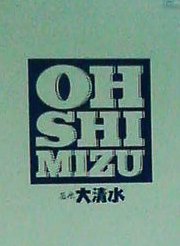
A vending machine uses
"OH" for the long vowel
Japanese is written using a mixture of kanji, Chinese characters, and kana, characters which represent Japanese sounds. For the benefit of non-Japanese who cannot read kana or kanji, ways to write Japanese in the roman alphabet have been developed.
The most common system of romanization is the Hepburn system, known as hebon-shiki (ヘボン式) in Japanese. This system is the one used in this Frequently Asked Questions. The Hepburn system was invented by an organization called the "Romaji-kai" in 1885, and popularized by a Japanese to English dictionary edited by an American missionary called J.C. Hepburn, after which it was named. This system uses bars called macrons, as in ō, to indicate Japanese long vowels, and it uses a variety of consonants to simplify reading for English speakers. For example, the kana た, ち, つ, て and と become ta, chi, tsu, te, to in this system.
Another system, which is taught to schoolchildren, is called the "Kunrei" or "official" romanization. It is similar to Hepburn, but uses hats over characters called circumflexes to indicate long vowels, as in ô, and it uses fewer consonants. For example, the kana た, ち, つ, て, と become ta, ti, tu, te, and to respectively. Since Japanese sees these as being part of one group, this is more consistent, but "ti" and "tu" are not intuitive spellings for the pronunciations for an English speaker.
In the original Hepburn system, the long vowels of Japanese are represented using a "macron" or bar over the vowel, so that the Japanese capital city "Tokyo", とうきょう in kana, is represented as Tōkyō, and actor Toshiro Mifune is represented as Toshirō Mifune. However, this macron is usually dropped outside the context of language textbooks, leading to the usual forms "Tokyo" and "Toshiro Mifune". In the Kunrei system, a circumflex, a hat character, is used, so in the Kunrei system these names become Tôkyô and Tosirô Mihune.
Yet another, much less common, system is Nippon-shiki (日本式) romanization. In both the Kunrei and Hepburn systems, two kana may both have the same romanization, for example ぢ and じ both become "ji" in Hepburn and "zi" in the Kunrei system. In the Nippon-shiki system, there is a one-to-one correspondence between kana and rōmaji, so ぢ becomes "di", and じ becomes "zi". Nippon-shiki romanization was presented by physicist Aikitsu Tanakadate in 1885. See What is Nippon-shiki romanization? for full details.
See A table of romanizations for a full table of the differences.
Many variations in romanization systems also exist. Sometimes "dzu" is used to romanize a づ (a tsu with a dakuten). This was used for the English name "adzuki" beans, but the Japanese pronunciation of the word is azuki and the "d" is not pronounced.
The "n" sound of the ん kana before a b or p sound is sometimes written as "m" because of the change in pronunciation. For example, しんぶん (shinbun) meaning "newspaper" is often written as shimbun. This is part of the original Hepburn romanization system, but not the modified Hepburn system. See What is Hepburn romanization? for more about this.
 |
| OH SHI MIZU A vending machine uses "OH" for the long vowel |
|---|
Sometimes the double vowel "oo" is written as "oh", as in the sign for the vending machine. This is quite common in Japanese people's names, and because it is permitted for use in passports, this has become known as "passport romaji".
Copyright © 1994-2025 Ben Bullock
If you have questions, corrections, or comments, please contact Ben Bullock or use the discussion forum / Privacy policy

|

|

|

|

|
| Book reviews |
Convert Japanese numbers |
Handwritten kanji recognition |
Stroke order diagrams |
Convert Japanese units |